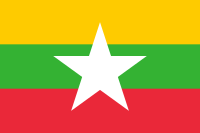
Photo from wikipedia
Purpose For decades, northern Thailand has been a hub for migration in the Greater Mekong Sub-region, particularly for migrants from Myanmar. HIV prevalence among Myanmar/Burmese migrants is higher than in… Click to show full abstract
Purpose For decades, northern Thailand has been a hub for migration in the Greater Mekong Sub-region, particularly for migrants from Myanmar. HIV prevalence among Myanmar/Burmese migrants is higher than in the general Thai population. This study aims to focus on Shan migrants living with HIV in Chiang Mai, the metropolitan centre of northern Thailand and to examine two related aspects: migrants’ sexual risk behaviour and their HIV knowledge and beliefs. The study aims to understand circumstances in which mobility increases HIV risk behaviour and prevalence. Design/methodology/approach Using a qualitative study, the authors conducted in-depth interviews in 2017 with 43 HIV-infected Shan migrants (21 males and 22 females), and 29 health-care providers who work in district hospitals in Chiang Mai. Findings The authors found that social and economic vulnerability associated with migration, and AIDS-related mortality, increased migrants’ likelihood of having multiple serial partners. Confusion about HIV symptoms, stigmatization of HIV positive women and low risk perceptions, particularly among men, increased their risk behaviours. Originality/value To the best of the authors’ knowledge, this paper is the first to study the way of life, sexual behaviour and HIV knowledge and beliefs of Shan Migrants from Myanmar Living with HIV in Thailand.
Journal Title: International Journal of Migration, Health and Social Care
Year Published: 2020
Link to full text (if available)
Share on Social Media: Sign Up to like & get
recommendations!